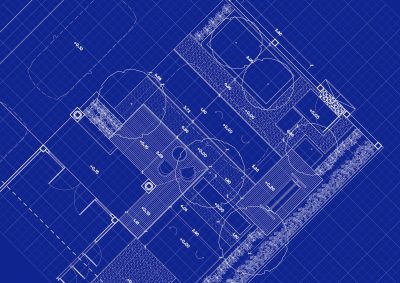


Suits Blog: Cloud POS System: Driving Modern Retail Experiences
Retail is changing fast. Shoppers expect mobile checkout, connected experiences, and smooth service across every channel. A cloud POS system makes this possible. Combined with a rapid application development (RAD) platform, retailers can unify business logic, stay agile, and deliver a modern omnichannel journey.
Introduction
It seems quite obvious – the customer should be the focus of every company. But even if that is reality, traditional organizations may not even put the focus on the customer in their organizational chart. So, what is it that makes customer-centric companies different? Not only do hierarchies need to be flattened, but existing process silos and bottlenecks need to be eliminated. The key to achieving this is technology.
In the retail sector, for example, companies must now be able to interact with customers in real-time and on an individual basis. So how can shops become more flexible and standardize their data to meet the personalized needs of the end consumer? This is where the customer experience (CX) of a Point of Sales (POS) system plays a central role.
Taking the Step to a Cloud POS System
The problem is that many retailers are still using the same on-premise POS system as 30 years ago. With these static and legacy technologies, new application possibilities for salespeople, shop assistants, or back-office staff are extremely limited. Furthermore, given the historically grown infrastructure, it is more difficult for them to think holistically about a flexible and combined omnichannel strategy that keeps up with their digital competition. Today only a few smart retailers demonstrate that solutions such as cloud POS systems and agile development tools are readily available on the market. It is these retailers that are driving forward innovations, improving procedures and standardizing online and offline processes.
Access to Real-Time Data Flow Is Crucial
At some point, each one of us has been in a shoe shop and asked for a new shoe size or a special shoe color. The employees then usually disappear into the stockroom or have to go back to the register to look for the desired shoe model. Unnecessary steps could easily be eliminated by allowing sales staff to check the information in real-time via an app linked to the inventory. The ability to assess customer needs in real-time enables the sales or store team to respond more quickly to customer requests. However, retailers today will better persuade customers with adequate data.
New shops or individual retailers are often already equipped with the latest technology. This is the biggest challenge for companies whose business processes have been running on legacy on-premise systems for several decades. To overcome this digital “Stone Age” for renowned brands such as Birkenstock or Elkjop, it was necessary to introduce new mobile solutions to improve the quality of B2B customer service and to digitize the end-to-end ordering process. Birkenstock developed and implemented a mobile order processing app. The application, designed for desktops and mobile devices, is connected to the company’s SAP systems so that customer and product information can be tracked in real-time during customer visits. Because of the omnichannel focus, shop managers can not only carry out ad hoc research but also (re)order merchandise at any time and without having to have a constant internet connection.
The Agile Way Is the Fastest Way
The transition from a traditional to an omnichannel IT infrastructure shouldn’t take years in today’s fast-moving retail business. Shorter development cycles and a cloud POS system are necessary in the innovation process for businesses. On the one hand, retailers face the challenge of constantly offering new products and services, either to enable operational improvements or to enhance the customer experience. On the other hand, it is about being more agile. Companies often have all the necessary tools and resources, but they are fragmented in the IT landscape and not efficiently connected. The collaboration of internal cross-functional teams for app development (a mix of business and IT staff) in conjunction with modern rapid application development (RAD) platforms empowers established companies to achieve a unified application development in agile cycles.
An agile development process can be achieved through comprehensive user consulting, a continuous development cycle for product improvement and a deeper understanding of the use of products or services.
To achieve this, Neptune Software, as an SAP partner, applies the “Design-Led Development Process” based on the SAP Fiori Design Guidelines.
The goal is to reduce the project duration from several years to only a few months and to deploy the first application prototypes in test groups after a few weeks so that feedback can be constantly collected. This model promotes unity between the business requirements of the “process owners” and the development team, while ensuring that the end-users’ customer experience is taken into account at every stage of the process.
The agile way is the scalable way when using a platform approach. With a roadmap clearly mapped on the application development platform and structured roles of all participants, whether business or IT, different applications or touchpoints can be developed and rolled out in the shortest amount of time.
Building Digital Innovation Through a Hybrid Architecture
Ultimately, it’s all about optimizing processes, reducing costs and increasing company performance through enthusiastic customers. This is where there is a clear trend towards a cloud POS system combined with an API-based approach, making the best use of business logic and data. Modern RAD platforms use programming interfaces to extract data and business logic from existing applications such as ERP, warehousing and CRM and combine it with real-time data from the cloud POS system. The result is a hybrid architecture approach of existing on-premise systems and a central cloud POS system. That’s the only way the complex requirements of omnichannel applications (mobile, offline, in-store, desktop, and warehouse) can be implemented flexibly and with reasonable expense.
Conclusion: Cloud POS System and RAD Platform
A completely renewed customer experience has an impact on short and long-term customer acquisition, sales and customer loyalty. Those who are currently not mobile are unlikely to maximize the potential of an omnichannel experience and are missing out on drastic growth potential. After all, innovative software and mobile applications in particular can be used to gain or maintain valuable competitive advantages. The hybrid cloud approach offers a solution that combines the in-store, offline and at-home experience and creates added value for consumers. The outcome is a modern customer journey. Working with RAD platforms allows retailers to involve their internal IT teams in projects to develop the best possible applications for end-users. Shorter development cycles allow for a higher rate of feedback, which leads to higher-quality applications with increased user acceptance. As a result, modern omnichannel solutions are rolled out – with improved services, both for the customers and for the company’s employees.
Key Take Aways
- Cloud POS systems enable real-time, personalized customer interactions, enhancing the overall shopping experience.
- Moving from outdated on-premise POS systems to cloud solutions boosts flexibility and supports a unified omnichannel strategy.
- Real-time data access empowers sales staff to respond swiftly to customer needs, improving service efficiency.
- Short development cycles and agile methods speed up innovation and application delivery, crucial for retail success.
- Combining cloud POS with existing systems via APIs supports seamless, cost-effective integration across all sales channels.



